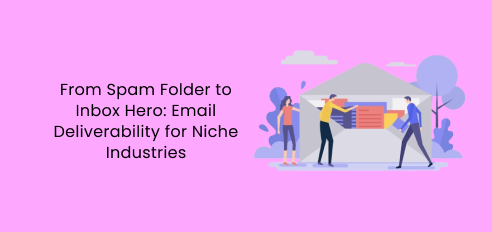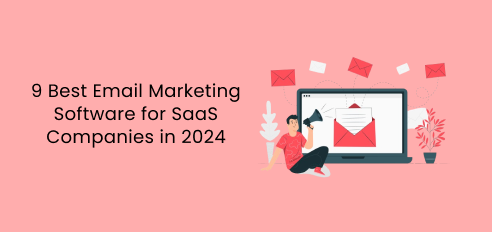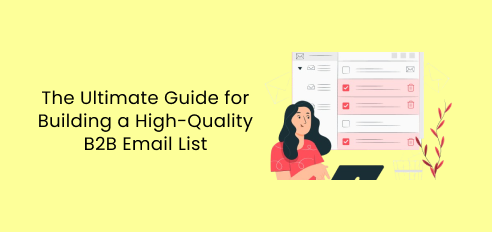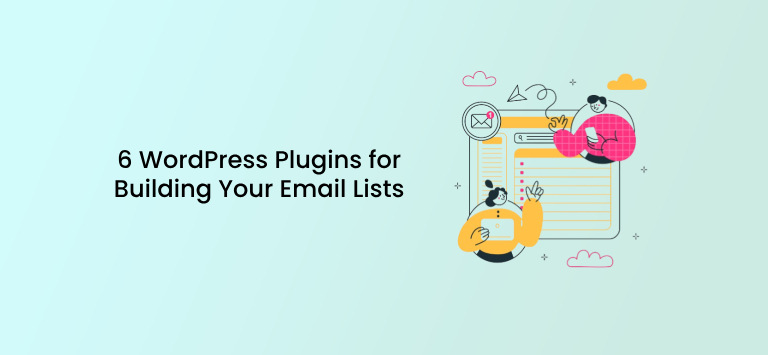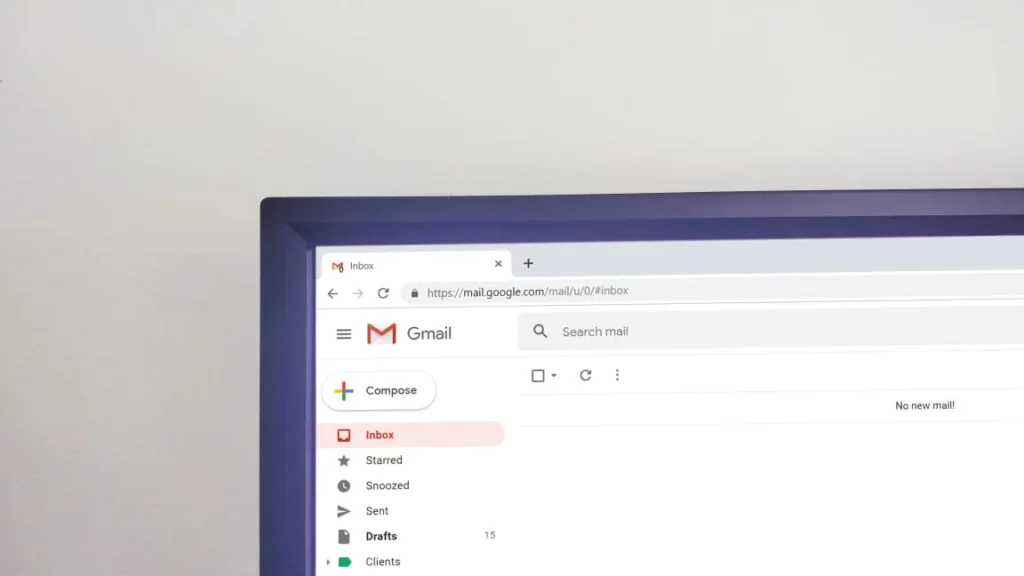
Welcome to the world of email deliverability, where every email message ever sent has the potential to journey from the dreaded spam folder to the coveted position of inbox hero. If you are navigating the waters of niche industries, mastering email deliverability is crucial for reaching your audience effectively.
In this blog post, we will dive into the strategies and insights that can transform your emails from being overlooked to becoming indispensable and tailored specifically for your niche. Let’s embark on this enlightening expedition together.
The Journey from Spam Folder to Inbox Hero
Have you ever wondered why some emails never seem to make it to your recipient’s inbox, instead they are languishing in the dreaded spam folder? Here are some reasons to explore:
What lands emails in the spam folder?
When it comes to the dreaded spam folder, several factors can contribute to your emails ending up there. Here’s a breakdown of what could be happening:
Content
Using words commonly associated with spam can raise red flags. Avoid terms like “free,” “buy now,” or “limited time offer” excessively.
Emails with excessive HTML formatting or large image-to-text ratios might get flagged as spam.
Sender Reputation
If your domain has a history of sending spammy emails, it can negatively impact your sender’s reputation.
The reputation of the IP address you’re sending emails from can also affect deliverability. Shared IPs might suffer if other users abuse them.
Recipient Engagement
Low open rates signal to email providers that your content might not be relevant to recipients.
Similarly, if recipients rarely click on your emails, it could indicate low engagement and lead to spam filtering.
Direct feedback from recipients marking emails as spam can harm your sender’s reputation.
Real-life Niche Industry Struggles with spam filters
In niche industries, navigating spam filters can be particularly challenging due to unique characteristics and audience behaviors. Here are some real-life examples:
Healthcare and Pharmaceuticals
You often encounter challenges navigating strict regulations surrounding marketing and patient privacy. Crafting compliant yet engaging email content becomes a delicate balancing act. Terms like medical terminology or drug names, if not used judiciously, might trigger spam filters, hindering your ability to deliver critical information to healthcare professionals or patients.
Financial Services
Your emails containing financial offers or investment opportunities are at risk of being mistaken for spam if not authenticated and personalized effectively. Due to the prevalence of phishing attempts targeting financial institutions, your emails may face heightened scrutiny from spam filters, impacting your deliverability rates.
Technology and Software
The fast-paced nature of the tech industry means that using rapidly changing technical jargon or product updates in your emails could inadvertently trigger spam filters. Automated emails, a common practice in software companies, might be flagged as spam if not optimized properly, leading to decreased engagement and poor email deliverability. Using a reputable cold email software will highly increase your chances of landing in the inbox.
Legal Services
Spam filters can hinder your attempts to communicate legal updates or service offerings via email due to the sensitive nature of legal content. Words like “legal advice”, or “litigation” might inadvertently trigger spam filters, preventing your emails from reaching clients or prospects effectively.
Education and E-learning
Delivering educational content or course updates via email becomes challenging as spam filters may flag emails containing terms like “online learning” or “educational resources” if not carefully crafted. The high volume of emails sent by educational institutions can lead to increased scrutiny by spam filters, necessitating a strategic approach to email marketing success and deliverability.
By understanding these real-life struggles specific to niche industries, you can better tailor your email marketing strategies to navigate spam filters effectively and ensure your messages reach your intended audience.
The Role of Spam Filters in Email Marketing
How Spam Filters Work
When you send out marketing emails, they pass through a number of spam filters designed to weed out unsolicited or unwanted messages. These filters typically scan emails for certain characteristics commonly associated with spam, such as specific keywords, excessive use of capital letters or exclamation marks, misleading subject lines, and suspicious attachments or links in bounced emails. They also analyze sender reputation, email authentication, and user engagement metrics to determine the likelihood of an email being spam.
Different Types of Spam Filters Used by Email Service Providers

1. Content-Based Filters
These filters analyze the content of an email to detect spam-like characteristics. They often use algorithms to assign scores based on various factors like keywords, formatting, and HTML coding.
2. Header Filters
Header filters inspect email headers for indications of spam, such as malformed headers, suspicious IP addresses, or inconsistent routing information.
3. Blacklist Filters
These filters compare sender information against known lists of spammers or suspicious senders. If the sender’s domain or IP address is listed, the email is likely to be filtered as spam.
4. Machine Learning Filters
Advanced spam filters utilize machine learning algorithms to continuously adapt and improve their spam detection capabilities. They analyze large datasets to identify patterns and trends associated with spam, allowing them to better distinguish between legitimate and unwanted emails.
Customizing Email Content to Avoid Triggering Spam Filters
To enhance the deliverability of your marketing emails and prevent them from being flagged as spam, it’s crucial to customize your content effectively. Consider implementing the following strategies:
1. Use Relevant and Personalized Content
Tailoring your emails to match the interests and preferences of your audience can significantly improve engagement and reduce the risk of being marked as spam. Utilize sales data segmentation and email sequence software to create content that resonates with individual recipients.
2. Avoid Spam Trigger Words
Be cautious with language choice and avoid using words and phrases commonly associated with spam, such as “free,” “buy now,” “limited-time offer,” and “act now.” Instead, focus on crafting compelling and informative content that adds value to the recipient’s experience.
3. Optimize HTML Coding
Ensure your emails are well-formatted and visually appealing by optimizing HTML coding. Strike a balance between text and images, avoiding excessive use of HTML or embedding large media files, as these practices can trigger spam filters and hinder deliverability.
4. Implement Email Authentication
Authenticate your emails using Sender Policy Framework (SPF), DomainKeys Identified Mail (DKIM), and Domain-based Message Authentication, Reporting, and Conformance (DMARC) protocols. These authentication methods verify the legitimacy of the sender’s identity, thereby enhancing deliverability and reducing the likelihood of being flagged as spam.
5. Monitor Engagement Metrics
Regularly monitor key engagement metrics such as open rates, click-through rates, and spam complaints to evaluate the performance of your email campaigns. Analyzing these metrics enables you to identify trends, pinpoint areas for improvement, and adjust your strategies accordingly to optimize deliverability and engagement.
Navigating Email Service Providers for Niche Industries
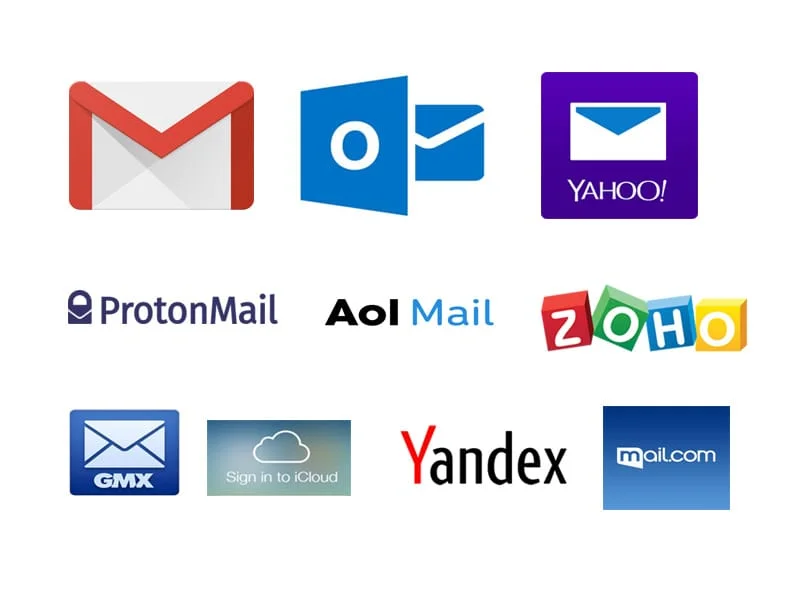
When it comes to managing email communications within niche industries, several key considerations come into play. From selecting the right email service provider (ESP) to maintaining a positive sender reputation and understanding provider-specific nuances, here’s your guide to navigating the landscape effectively:
A. Choosing the Right Email Service Provider for Niche Markets
Selecting the appropriate ESP is crucial for effectively reaching and engaging with your niche audience. Consider the following factors:
Industry Expertise
When selecting an Email Service Provider (ESP), prioritize those with industry expertise tailored to your niche. Look for ESPs that have experience working with businesses similar to yours, understanding the unique needs and challenges. They should offer specialized features and solutions designed specifically for your industry, ensuring that you can effectively reach and engage your target audience.
Customization and Flexibility
Your email marketing service or chosen ESP should provide customization options to tailor emails according to your niche audience’s preferences. This customization could include specialized templates that resonate with your industry, and advanced segmentation tools to improve customer retention and align with the b2b sales process.
Deliverability Rates
Evaluate the ESP’s track record for delivering emails to inboxes rather than spam folders within your industry. High deliverability rates are crucial for the success of your email campaigns, as they directly impact your ability to reach and engage with your target audience effectively. Choose an ESP with proven deliverability rates, a solid email marketing strategy and a good reputation for maintaining a strong sender reputation within your niche.
Compliance and Security
Prioritize ESPs that comply with industry regulations such as GDPR (General Data Protection Regulation) for data protection, especially if you operate in a regulated industry. Additionally, look for platforms with robust security measures in place to safeguard sensitive information and protect against potential data breaches.
Integration Capabilities
Select an ESP that seamlessly integrates with your existing tools and platforms commonly used within your industry, like a cloud-based CRM, which is vital for streamlining workflows and enhancing efficiency in managing B2B data. Whether you rely on platforms like Quickmail, e-commerce platforms, or digital marketing and automation tools, integration capabilities are essential for streamlining workflows and enhancing efficiency. Ensuring seamless integration, especially with tools like a power dialer, is crucial for streamlining operations and allowing for more efficient campaign management.
Analytics and Reporting
Go for an ESP that provides comprehensive analytics and reporting capabilities tailored to your niche market. Detailed insights into your email marketing strategy and performance metrics specific to your industry allow you to track the effectiveness of your campaigns, identify areas for improvement, and make data-driven decisions for optimization. Look for features such as industry-specific benchmarks, audience segmentation analysis, and campaign performance comparisons to gain valuable insights into your email marketing strategy and efforts.
B. Best Practices for Maintaining a Good Sender Reputation
Maintaining a positive sender reputation is essential for ensuring your emails reach your audience’s inboxes. Follow these best practices:
Permission-Based Marketing
Only send emails to subscribers who have explicitly opted in to receive communications from you. Avoid purchasing email lists or engaging in unsolicited email campaigns, as these practices can affect the open innovation in your marketing strategies.
Consistent Engagement
Regularly engage with your audience through relevant and valuable content. This helps keep your email list active and reduces the risk of future emails being flagged as spam.
Optimize Subject Lines and Content
Craft compelling subject lines and relevant content that resonates with your niche audience. Avoid spammy language and misleading content, as this can get spam complaints and harm your sender’s reputation.
Monitor Feedback Loops
Pay attention to feedback loops provided by ISPs (Internet Service Providers) and email service providers. Address complaints and unsubscribe requests promptly to avoid spam filters and maintain a positive reputation.
Authentication Protocols
Implement authentication protocols such as SPF, DKIM, and DMARC to verify the authenticity of your emails and prevent spoofing or phishing attempts.
C. Understanding Provider-Specific Nuances and Guidelines
Each ESP may have its own set of guidelines and best practices. Familiarize yourself with the nuances of your chosen provider:
Delivery Policies
Understand the email delivery policies and algorithms of your ESP to optimize email delivery rates. This may include factors such as sending frequency, content quality, and engagement metrics.
Compliance Requirements
Adhere to the compliance requirements set forth by your ESP, including acceptable use policies and terms of service. Failure to comply could result in account suspension or termination.
Support and Resources
Take advantage of any support resources or documentation provided by your ESP. This could include knowledge bases, tutorials, and customer support channels to help navigate any challenges specific to your niche industry.
Strategies to Improve Email Deliverability
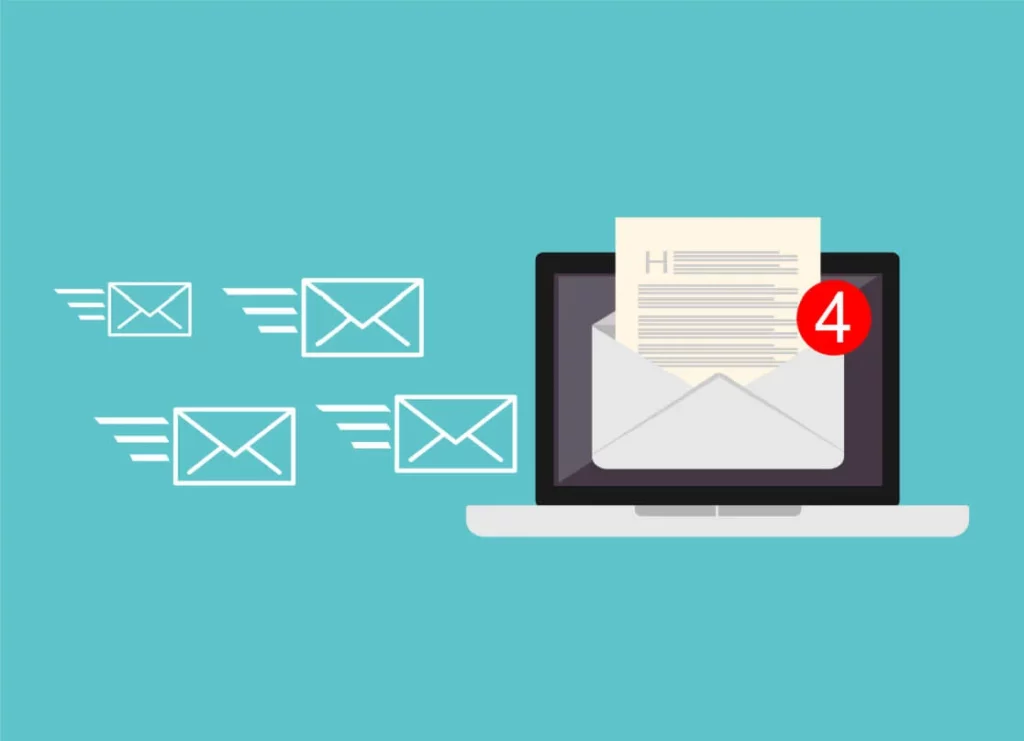
Building and Maintaining a Clean Email List
When it comes to email deliverability, the quality of your email list is paramount. Keep your list updated by regularly removing inactive or incorrect email addresses. Implementing a double opt-in process not only confirms subscribers’ interest but also ensures the accuracy of your list. Additionally, monitor bounce rates closely and promptly remove addresses that consistently bounce. By maintaining a clean email list, you increase the chances of your emails reaching the intended recipients’ inboxes.
Crafting Engaging and Relevant Content
The content of your emails plays a crucial role in engaging new subscribers and improving deliverability. Tailor your content to resonate with your audience’s interests and preferences. Personalization is key – address subscribers by name and segment your list to deliver targeted content. Take advantage of subject line optimization that entices recipients to open your emails and provide valuable information or offers that encourage interaction. Including clear calls-to-action (CTAs) prompts subscribers to take the desired actions, further enhancing engagement and deliverability.
Technical Aspects: Authentication Protocols and Domain Reputation
Ensuring proper authentication and maintaining a positive domain reputation are essential technical aspects of email deliverability. Implement authentication protocols such as Sender Policy Framework (SPF), DomainKeys Identified Mail (DKIM), and Domain-based Message Authentication, Reporting, and Conformance (DMARC) to validate the authenticity of your emails. Regularly monitor your domain reputation using tools provided by email service providers or third-party services. Address any issues that promptly affect your email deliverability and rate. Additionally, avoid practices that could trigger spam filters, such as using spammy language or sending emails too frequently.
Monitoring and Optimization
Continuously monitor key metrics such as open rates, click-through rates, and unsubscribe rates to gauge the effectiveness of your various email marketing campaigns. Analyze the data to identify trends and areas for improvement. Experiment with different strategies, such as sending times, subject lines, and content formats, to optimize engagement and enhance email deliverability. Regularly review and update your own email strategy and marketing practices, adapting to changes in subscriber behavior and email regulations, ensuring long-term success in improving email deliverability.
Monitoring and Adapting: Keeping Out of Spam Folders
Monitoring Email Deliverability
To ensure your emails land in recipients’ inboxes and avoid the dreaded spam folder, it’s crucial to monitor key performance metrics closely. Here’s what you should be keeping an eye on:
Delivery Rate
This metric tells you the percentage of emails that successfully reach recipients’ inboxes without bouncing back. A high delivery rate indicates that your emails are being successfully delivered to your intended audience.
Open Rate
Measure how many recipients actually open your emails. A high open rate indicates strong engagement with your content and suggests that your subject line and preview text are effective in grabbing recipients’ attention.
Click-Through Rate (CTR)
This metric shows the percentage of recipients who click on links within your emails, indicating the effectiveness of your content and calls to action. A high CTR demonstrates that your emails are compelling and are driving recipients to take desired actions.
Bounce Rate
Monitor the percentage of emails that fail to deliver due to invalid email addresses or other issues. High bounce rates can negatively impact your sender’s reputation and deliverability. By regularly cleaning your email list and removing invalid addresses, you can reduce bounce rates and improve sender reputation and deliverability.
Spam Complaint Rate
Keep track of how many recipients mark your emails as spam. A high spam complaint rate can harm your sender’s reputation and deliverability. It’s essential to provide valuable and relevant content to your subscribers to minimize the number of spam complaints.
Tools for Monitoring
Email Service Providers (ESPs)
Popular ESPs like Mailchimp, Constant Contact, and Campaign Monitor offer robust analytics dashboards to track deliverability metrics. These platforms provide insights into email performance and allow you to identify areas for improvement.
Email Deliverability Tools
Consider using specialized email deliverability tools such as GlockApps and SendForensics to gain deeper insights into your email performance and deliverability. These tools can help identify email deliverability issues and provide recommendations for improving email deliverability.
Inbox Placement Testing Tools
Tools like Litmus and Email on Acid allow you to test your emails across different email clients and devices to ensure optimal inbox placement. These tools help ensure that your emails are rendered correctly across various email clients and are not filtered into the spam folder.
Adapting Strategies
Analyzing Performance Analytics
Once you have gathered enough data, it’s time to analyze and adapt your email marketing campaign strategies accordingly:
Content Optimization
Review your email content to ensure it is relevant, engaging, and valuable to your recipients. Tailor your content based on recipient preferences and behaviors. Consider conducting surveys or analyzing customer feedback to understand what types of content resonate best with your audience.
Segmentation and Personalization
Use data to segment your email lists and personalize your messages for different audience segments. Personalized emails have higher open and click-through rates as they are tailored to the specific interests and preferences of each recipient.
Testing and Experimentation
Conduct A/B tests on various elements of your emails, including subject lines, sender names, and content, to identify what resonates best with your audience. Experiment with different email formats, visuals, and messaging to determine the most effective approach for engaging your subscribers.
List Hygiene
Regularly clean your email lists to remove inactive email subscribers and invalid email addresses. This helps reduce bounce rates and improve deliverability. Consider implementing re-engagement campaigns to win back inactive email subscribers and keep your email list healthy.
Feedback Loop with ISPs
Maintain a proactive relationship with internet service providers (ISPs) to address any deliverability issues promptly:
Monitor ISP Feedback
Keep an eye on feedback from ISPs, such as spam complaints and email blocklists. Address any issues promptly to maintain a better sender reputation. Respond to spam complaints promptly and investigate the root cause to prevent future occurrences.
Authenticate Your Emails
Implement email authentication protocols like SPF, DKIM, and DMARC to prove the authenticity of your emails and improve email deliverability, too. These protocols help verify that your emails are legitimate and reduce the likelihood of them being filtered as spam.
Wrapping Up
In wrapping up, remember that as a business operating within a niche industry, the journey from the dreaded spam folder to the coveted inbox hero status requires consistent effort and strategic adaptation. Your choice of Email Service Provider (ESP) plays a pivotal role, so opt out for one with specialized knowledge and features tailored to your niche. Embrace customization options to ensure your emails resonate deeply with your audience, driving engagement and loyalty.
Deliverability rates are non-negotiable. Your emails must consistently land in the subscribers’ inboxes to maximize their impact. Therefore, prioritize ESPs with a proven track record of high deliverability rate within your industry. Compliance with industry regulations such as GDPR is crucial for maintaining trust and credibility, while robust security measures safeguard sensitive data.
And don’t forget the power of analytics. Utilize comprehensive reporting features to gain insights into your email performance, empowering you to refine your strategies and optimize results.
So, keep evolving, keep innovating, and keep a keen eye on industry trends and customer preferences. With dedication and the right approach to business communication and email marketing success, you can transcend the confines of the spam folder and emerge as a true inbox hero, delivering value, relevance, and impact with every email you send
